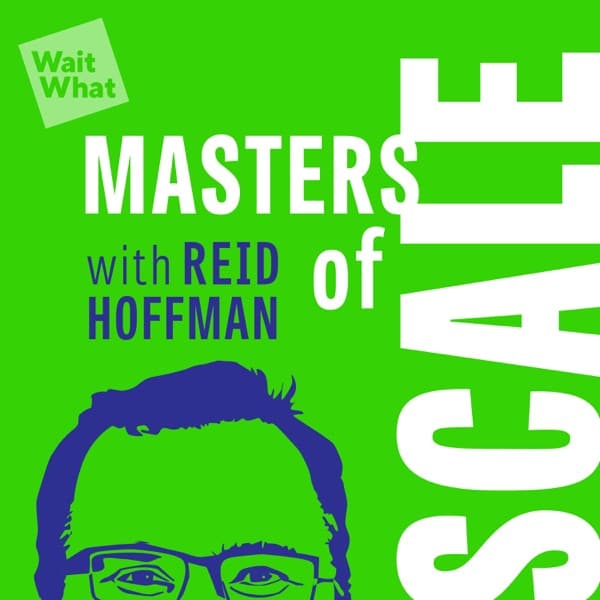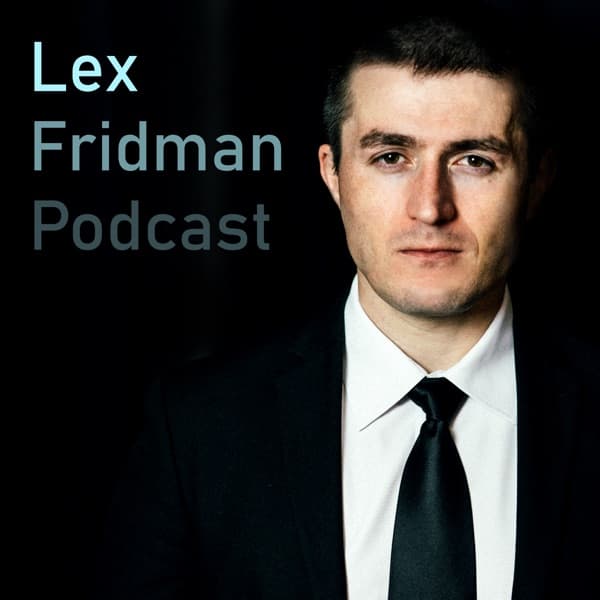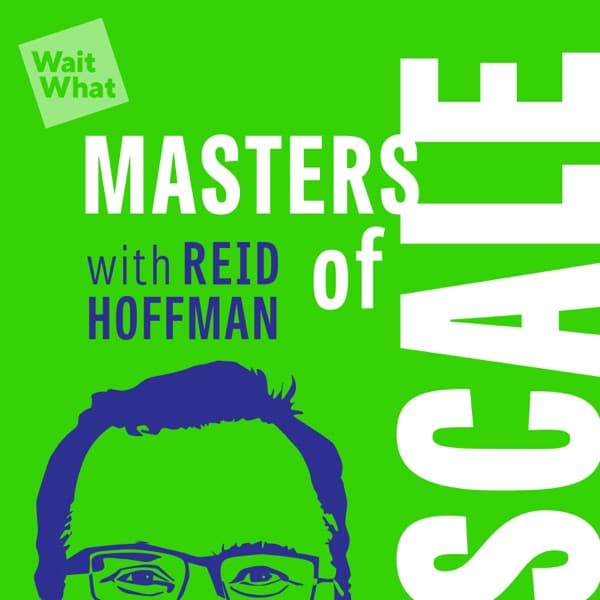All-In Podcast: Key committee chairmen support crypto legislation, focusing on stable coins and market structure.
This Week in Startups: The decline in tech hiring is attributed to improved software and self-service solutions reducing the need for IT support.
This Week in Startups: The discussion focuses on what makes a great Super Bowl ad, emphasizing creativity and memorability.
This Week in Startups: The discussion centers on the idea of creating an AI-powered email system that encourages customer interaction by replacing 'do not reply' emails with 'please reply' emails, enhancing customer engagement and experience.
FirstRoundCapital: The company focused on building a diversified product for multiple verticals rather than just gaming, anticipating future market growth.
Fireship: Elon Musk attempts a hostile takeover of OpenAI, offering $97.4 billion, but faces resistance from Sam Altman and complex financial implications.
a16z Podcast: The discussion focuses on the critical role of mining in supporting the green revolution and the use of AI and data to improve mineral exploration.
Masters of Scale: The discussion focuses on the effectiveness of Super Bowl ads, emphasizing the importance of being ownable, memorable, and relevant, with insights from Dara Tresider, CMO of Autodesk.
All-In Podcast - David Sacks: What Crypto Legislation to Expect in 2025
The discussion highlights a significant development where chairmen of four key committees have united to support cryptocurrency legislation. This marks a pivotal moment for the crypto industry, as it seeks clarity on the classification of digital assets. The categories include currencies, securities, commodities, and collectibles like NFTs. The need for clear definitions is emphasized to help founders understand compliance requirements. The discussion also covers how a crypto project might evolve from a security to a commodity as it becomes decentralized. The chairmen's support extends to stable coins, with Senator Hagerty introducing a stable coin bill. The legislative focus will first address stable coins, followed by market structure, with expectations to achieve progress within six months.
Key Points:
- Four key committee chairmen support crypto legislation.
- Clarity needed on digital asset classifications: currencies, securities, commodities, collectibles.
- Stable coins are the initial legislative focus, with a bill introduced by Senator Hagerty.
- Market structure legislation to follow stable coins.
- Legislation expected to progress within six months.
Details:
1. 🤝 United Support for Crypto Legislation
- Four chairmen of key committees have collectively expressed readiness to support crypto legislation, marking a significant step forward in regulatory progress.
- This unprecedented alignment among committee leaders suggests a strong, unified approach to creating effective crypto regulation.
- The committees involved include influential groups that play crucial roles in shaping financial and technological policies.
- The support from these committee leaders could accelerate the legislative process, potentially leading to comprehensive regulation in the crypto space.
- This development indicates a shift towards more structured and legally backed frameworks for cryptocurrency operations, which could enhance market stability and investor confidence.
2. 🪙 Diverse Nature of Digital Assets
- Digital assets encompass a broad spectrum including cryptocurrencies like Bitcoin, crypto securities, and digital commodities.
- Bitcoin, as a prime example, is regulated as a commodity, emphasizing its distinct classification among digital assets.
- Other digital assets, such as Ethereum, may also fall under different regulatory categories, illustrating the complexity and diversity within the digital asset space.
3. 🔍 Defining Market Clarity for Compliance
- The market needs clarity around the definition of items that are not securities or commodities, such as NFTs and collectibles, to ensure compliance.
- Founders require clear guidelines to understand the regulatory framework, enabling them to comply with the rules effectively.
- Providing specific examples of items needing clarity, such as NFTs and collectibles, helps founders navigate compliance requirements.
- Establishing clear definitions and guidelines will assist in distinguishing between securities, commodities, and other digital assets like NFTs.
4. 🔄 Evolution of Crypto Market Structure
- Crypto projects often begin as securities due to initial centralization and fundraising through token sales, which attract investment under securities laws.
- As projects develop, they can evolve into decentralized protocols, potentially leading to reclassification as commodities, thus exempting them from certain securities regulations.
- Understanding this evolution is crucial for compliance and strategic planning, especially in navigating different regulatory environments and expectations.
- Projects like Ethereum have undergone scrutiny and have been debated over their classification, illustrating the complex nature of defining crypto assets.
- Strategic navigation of this transition can help projects align with regulatory frameworks, ensuring long-term viability and operational freedom.
5. 🏦 Prioritizing Stablecoin Legislation
- The chairman is prioritizing stablecoin legislation, with plans to address it ahead of market structure reforms.
- Senator Hagerty, a Banking Committee member, has introduced a stablecoin bill that complements similar efforts in the House.
- There is a strong likelihood that stablecoin legislation could be enacted within the next six months, indicating a focused legislative push.
This Week in Startups - Is AI Quietly Replacing IT Jobs?
The discussion highlights a significant decline in tech hiring in the US, with unemployment for IT workers rising from 3.9% to 5.7%. This is attributed to improved software and self-service solutions, which empower users to solve their own technical issues without needing IT support. The conversation suggests that AI and other technologies are enabling users to find solutions independently, reducing the demand for traditional IT roles. This trend is expected to extend to other professions like law and accounting, where initial queries can be addressed by AI before consulting professionals. Additionally, the use of platforms like Coda is emphasized for startups to manage tasks efficiently, integrating documents, spreadsheets, and apps into a single workspace to streamline operations and reduce the need for multiple software solutions.
Key Points:
- Tech hiring in the US has declined, with IT unemployment rising to 5.7%.
- Improved software and self-service reduce the need for IT support.
- AI tools like ChatGPT empower users to solve issues independently.
- This trend may extend to professions like law and accounting.
- Platforms like Coda help startups manage tasks efficiently.
Details:
1. 📉 Decline in US Tech Jobs
1.1. Statistics on Unemployment in US Tech Sector
1.2. Factors Contributing to Increased Unemployment
2. 🤖 AI & Software Transforming IT Jobs
- The unemployment rate for IT professionals is notably higher than the average American worker, highlighting a paradox in technology's growth sector.
- Key factors contributing to this trend include the enhancement of software quality and the offshoring of IT services, which reduce domestic job opportunities.
- The rise of self-service capabilities significantly decreases the demand for traditional tech support, as users increasingly resolve issues independently through intuitive software and hardware solutions.
- AI tools, such as ChatGPT, empower users to independently troubleshoot and resolve technical problems, further diminishing the reliance on IT support staff.
- For instance, after implementing AI-driven self-service tools, certain companies reported a 30% reduction in IT support calls, showcasing the tangible impact on IT employment.
3. 🔍 AI's Expanding Role in Professional Services
- AI is significantly reducing the need for human support staff in professional services, with tools like ChatGPT, YouTube, and Gemini potentially cutting help desk calls by up to 50%.
- In the legal field, AI tools are being used as a preliminary step before consulting attorneys, saving clients substantial fees ranging from $800 to $1,200.
- For founders and employees, AI provides the capability to analyze documents such as term sheets and non-compete agreements, enabling informed decisions before involving legal counsel.
- AI is projected to handle the first third to half of inquiries in professional services, marking a shift from traditional search engines to AI-driven solutions.
- In corporate settings, companies like Yahoo are leveraging AI for internal solutions, as seen with products like Glean achieving $100 million ARR, proving AI's commercial viability.
- Despite AI's growth, large companies still need IT staff to manage complex internal systems, indicating a complementary role of AI rather than a complete replacement.
4. 🏢 Importance of IT Staff in Large Enterprises
- Enterprises with over a thousand employees encounter intricate IT challenges that require more than basic automated solutions like chatbots.
- Automated solutions, while useful, cannot replace the nuanced and multifaceted expertise needed to manage IT in large organizations.
- For enterprises with fewer than a thousand employees, the reliance on automated solutions might reduce the need for extensive IT staffing.
- Examples of these complexities include managing large-scale data, ensuring robust cybersecurity measures, and integrating various IT systems across multiple departments.
5. 🛠️ Coda: Streamlining Startup Operations
- Coda acts as an all-in-one platform that integrates documents, spreadsheets, and apps into a single scalable workspace, enhancing organizational control.
- Coda enables automation of repetitive tasks and centralizes information sharing, creating a single source of truth for training documents, meetings, and investor relations.
- The platform offers templates to jumpstart projects, such as cataloging the top 500 private companies through Twist 500, which utilizes Coda for backend tracking.
- Using Coda eliminates the need to research and negotiate with multiple SaaS vendors, saving substantial costs and time by consolidating tools into one platform.
- Coda supports setting OKRs and balancing ambitious goals with practicality, providing flexibility to adapt to shifting priorities.
- A special offer for startups includes 6 months free access to Coda's team plan, encouraging adoption of the platform for operational efficiency.
This Week in Startups - OpenAI’s Super Bowl Ad: Bold Move or Missed Opportunity?
The conversation highlights the importance of cutting through the noise on the busiest advertising day of the year, the Super Bowl. A successful ad should not only capture attention but also have a memorable hook. An example discussed is Oatley's ad featuring their CEO playing piano, which was controversial but memorable. Despite its mixed reception, it succeeded in getting people to talk about the brand. The discussion also critiques an ad by OpenAI, noting its aesthetic appeal but lack of a strong, memorable message. The speakers suggest that ads should clearly demonstrate the product's value and potential impact, similar to how AT&T's past ads predicted future technologies. The conversation concludes with a recommendation for Lemon.io, a platform for hiring vetted developers, emphasizing its efficiency and reliability.
Key Points:
- Super Bowl ads must stand out and be memorable.
- Oatley's controversial ad was memorable despite mixed reviews.
- OpenAI's ad was visually appealing but lacked a strong message.
- Ads should clearly show product value and potential impact.
- Lemon.io offers vetted developers, saving time and resources.
Details:
1. 💡 Crafting a Memorable Super Bowl Ad
- To create a standout Super Bowl ad, focus on cutting through the noise on the busiest advertising day of the year.
- It's essential to do something extreme and unconventional to capture people's attention.
- A successful ad must not only attract attention but also include a memorable hook or image.
- The 2010 Old Spice ad is a prime example, which gained viral success due to its unique and humorous approach.
- Incorporating celebrity endorsements or unexpected twists can significantly enhance ad recall and engagement.
- Leveraging cultural moments or themes that resonate with the audience increases the likelihood of the ad being shared widely.
2. 🎹 Oatley's Bold Advertising Gamble
- Oatley launched a Super Bowl ad featuring their CEO playing the piano, which, despite being perceived as annoying by many, succeeded in generating widespread discussion and visibility for the brand.
- The ad exemplifies a bold marketing strategy where a brand with limited resources takes significant risks to achieve high visibility, highlighting the potential and pitfalls of such approaches.
- Despite the buzz, Oatley's valuation declined to approximately $24, indicating that the increased brand visibility did not translate into expected financial success, possibly due to factors like market conditions or execution challenges.
- The mixed results underscore the importance of aligning marketing strategies with financial goals and market readiness to ensure sustainable business growth.
3. 🔍 A Close Look at OpenAI's Super Bowl Campaign
3.1. Financial Investment in Super Bowl Ad
3.2. Creative Concept and Artistic Style
4. 🤔 Critiquing Chat GPT's Ad Message
- The ad lacked a compelling narrative explaining the importance of Chat GPT, missing a chance to emulate iconic ads like Apple's 1984 commercial.
- While aesthetically pleasing with interesting design, the ad failed to engage or hook the audience meaningfully.
- A stronger ending, similar to Apple's memorable 1984 commercial, was suggested to leave a lasting impact on viewers.
- Critiques highlight the need for a clearer connection between the visuals and the product's value proposition.
- Comparison with successful ads suggests the need for a more cohesive storytelling approach to enhance engagement and retention.
- To improve, the ad should clarify its objectives and target audience to better align its messaging strategy.
5. 🚀 Highlighting Technological Progress in Ads
5.1. General Observations on Advertisements
5.2. Chat GPT Advertisement Analysis
5.3. Effective Advertisement Strategies
5.4. Potential Improvements in Advertising
6. 🔧 Streamlining Developer Hiring with Lemon.io
- Lemon.io gives access to thousands of on-demand developers, greatly reducing time and cost in the hiring process.
- Developers sourced by Lemon.io are thoroughly vetted, ensuring they are experienced and results-driven, while offering competitive rates.
- All developers have a minimum of 3 years experience, and Lemon.io guarantees a replacement if any issues arise with the hired developer.
- Launch Founders have shared positive testimonials, highlighting successful partnerships and the efficiency of Lemon.io's services.
- Lemon.io promises to find the perfect developer or tech team within 48 hours or less, showcasing their efficiency.
- Twist listeners benefit from a 15% discount on the first four weeks, adding a tangible financial incentive.
This Week in Startups - "Please Reply At" – The AI Email Startup Waiting to Happen
The conversation highlights a business idea proposed by Sam Lon, suggesting the development of an AI-driven email system that replaces 'do not reply' emails with 'please reply' emails. This system would allow customers to interact with businesses more freely, with AI providing initial responses and escalating to human interaction when necessary. This approach could significantly improve customer engagement and satisfaction, particularly for small businesses. The discussion also touches on the practicality of building such a system using existing AI technologies and APIs, and whether companies should build or buy such solutions. The idea is to offer this service at a competitive price, making it accessible to small businesses and startups, potentially transforming their customer service operations. Additionally, the conversation explores the cost-benefit analysis of developing custom software versus purchasing existing solutions, emphasizing the importance of focusing resources effectively in startups.
Key Points:
- Develop an AI email system to replace 'do not reply' with 'please reply' to enhance customer interaction.
- Use AI to provide initial responses, escalating to human interaction if needed, improving customer satisfaction.
- Consider building or buying AI solutions based on cost-effectiveness and resource allocation.
- Offer the AI email service at a competitive price to attract small businesses and startups.
- Focus on using existing AI technologies and APIs to develop practical and efficient solutions.
Details:
1. 💡 Innovative AI Email Gateway Idea
1.1. AI Handling Initial Responses
1.2. Business Model
1.3. Expansion Opportunities
1.4. Market Entry Strategy
1.5. Encouragement for Entrepreneurs
2. 🏗️ Build vs. Buy in Software Development
- The decision to build or buy software hinges on cost-effectiveness and strategic alignment. If the cost of in-house software development and maintenance surpasses the cost of employing three developers, purchasing becomes more economical.
- Focusing on projects that align with strategic priorities and do not overextend resources is crucial. Unnecessary custom software can detract from core objectives.
- Building custom software is justified when managing large volumes and specific needs, such as an accelerator processing 20,000 applications and making 100 investments annually, where tailored solutions enhance efficiency.
- In contrast, firms with fewer investments and applications often benefit more from off-the-shelf software due to cost efficiency.
- Consideration of potential risks, such as scalability and integration challenges, is important in the decision process.
3. 📞 Introducing OpenPhone for Entrepreneurs
- OpenPhone provides a business phone system for entrepreneurs at $15 per month, keeping business and personal communications separate.
- AI-powered call transcripts and summaries are included, ensuring clear understanding of discussions and action items.
- Automated messages prevent missed follow-ups, enhancing customer engagement.
- The system is compatible with Android, iOS, and computer, and integrates with HubSpot and other systems, facilitating easy call management.
- OpenPhone is trusted by over 50,000 businesses and is recognized for its affordability and award-winning service.
- A current offer provides a 20% discount for the first six months for new users via openphone.com/twist.
- OpenPhone offers free porting of existing numbers from other services.
FirstRoundCapital - While everyone built for gaming, Braze stayed broad and built for a market that didn't exist (yet)
Between 2012 and 2015, many SaaS businesses in the mobile sector focused on the gaming industry due to its quick profitability. However, the company in question chose to develop a product applicable across various industries, believing this approach would fundamentally change lifestyles and the economy. They avoided the gaming industry's unsustainable practices, such as exploiting users for in-app purchases. This strategic decision allowed them to be well-positioned when the market expanded beyond gaming. As a result, they built a diversified capability, while others struggled to pivot away from gaming. Today, their largest vertical accounts for only about 21-22% of their revenue, demonstrating their broad market reach. They adopted a long-term vision, investing in a future market they believed would grow significantly larger than gaming. This approach deviated from the Lean Startup methodology, which advocates for a narrow focus initially. Their foresight allowed them to develop a comprehensive product with 35 out of 50 necessary functionalities by the time the market caught up, enabling rapid growth and differentiation.
Key Points:
- Focus on diversified product development across multiple verticals, not just gaming.
- Avoided unsustainable gaming practices, anticipating broader market needs.
- Positioned well for market expansion beyond gaming, leading to diversified revenue streams.
- Adopted a long-term vision, investing in future market growth.
- Developed comprehensive product functionalities, enabling rapid growth and differentiation.
Details:
1. 🎮 Early Focus on Gaming Industry
- Between 2012 and 2015, 85-90% of SaaS businesses in mobile concentrated on the gaming industry, reflecting its status as the quickest route to profitability at the time.
- The gaming industry was seen as a lucrative market due to its rapid user growth and high engagement rates, which translated into significant monetization opportunities.
- During this period, successful companies often leveraged in-app purchases and microtransactions, tapping into a market that consistently showed a willingness to spend.
- Examples of successful gaming apps that drove profitability include "Clash of Clans" and "Candy Crush Saga," which dominated the charts and generated substantial revenue through innovative monetization strategies.
2. 🌍 Vision Beyond Gaming
- The company aims to broaden its impact beyond gaming, targeting sectors like education, healthcare, and finance.
- Founders believe the product will revolutionize daily life and economic systems, motivating continued perseverance through challenges.
- Specific applications include using the product for educational simulations, healthcare training, and financial modeling, demonstrating its versatility.
- The strategic vision includes partnerships with industry leaders in these sectors to leverage the product's capabilities effectively.
3. 🛠️ Building a Diversified Product
- The gaming industry has faced criticism for unsustainable business models centered around exploiting 'whales' (high-spending users) and promoting excessive in-app purchases by children, which raises ethical concerns.
- A strategic pivot has been made to avoid these exploitative practices, emphasizing the development of more sustainable and ethical business models in gaming, prioritizing long-term player satisfaction over short-term revenue gains.
4. 🚀 Strategic Positioning for Growth
- Our largest single vertical accounts for only 21-22% of our Vue, highlighting our diversified capability, which reduces dependency on a single market and enhances stability.
- The decision to invest in a non-gaming vertical is based on a strategic outlook that it will grow to be substantially larger than gaming in the future, aligning our investments with anticipated market trends and future growth opportunities.
- We focus on strategic diversification to not only capture current market opportunities but also to position ourselves for future growth, leveraging industry insights and market analysis.
- This approach allows for risk mitigation across various sectors while capitalizing on emerging trends, ensuring long-term sustainable growth.
5. 🔮 Preparing for Future Market Needs
- The company strategically deviated from the traditional Lean Startup methodology by choosing not to focus on a super narrow product for one use case.
- They anticipated future market and technology trends, leading to the development of a broader product with extensive functionality.
- Despite initial market misalignment, this forward-thinking approach allowed them to build 35 out of the 50 required functionalities before the market caught up with their vision.
- Once the market aligned with their expectations, they experienced rapid growth due to significant product differentiation.
Fireship - Elon Musk attempts hostile takeover of OpenAI…
Elon Musk has made a surprising move by offering $97.4 billion to take over OpenAI, a company with only $3.7 billion in revenue and high annual expenses. Despite the generous offer, Sam Altman, OpenAI's CEO, declined and countered with an offer to buy Twitter. Musk's bid is seen as a strategic move to gain control over artificial intelligence, a critical component for his vision of world domination. OpenAI's transition from a nonprofit to a for-profit structure complicates the situation, as Musk's offer targets the nonprofit's assets, which include control over the for-profit entity. This move could hinder OpenAI's mission to create AI for humanity's benefit, as it raises the nonprofit's valuation, making it harder to transition to a for-profit model. Additionally, Microsoft's stake in OpenAI's future profits adds another layer of complexity. While Musk's intentions are questioned, the likelihood of him succeeding in this takeover is low, but the rivalry between Musk and Altman continues to intensify.
Key Points:
- Elon Musk offers $97.4 billion to take over OpenAI, a company with $3.7 billion revenue.
- Sam Altman declines Musk's offer and counters with a bid to buy Twitter.
- Musk's offer targets OpenAI's nonprofit assets, complicating its transition to a for-profit model.
- Microsoft's stake in OpenAI's future profits adds complexity to the takeover bid.
- The likelihood of Musk succeeding in the takeover is low, but the rivalry with Altman persists.
Details:
1. 🤖 Elon Musk's Ambitious Bid for OpenAI
1.1. Elon Musk's Acquisition Attempt
1.2. Rejection and Strategic Implications
2. 📅 February 11th, 2025: Key Insights from The Code Report
- Analyzing the recent SHS firing reveals potential market shifts.
- The SHS event could lead to significant changes in industry dynamics.
- Understanding the implications of SHS is crucial for stakeholders.
- The firing indicates a potential 12% change in market share for competitors.
- Stakeholders should focus on adapting strategies to accommodate potential shifts.
- The incident emphasizes the need for agility in strategic planning.
3. 🚀 Musk's Innovations and Future Goals
- Elon Musk revolutionized the automotive industry by making electric cars mainstream and appealing, leading to widespread adoption and competition in sustainable transportation.
- Musk's SpaceX initiative has placed internet satellites in orbit, enhancing global internet connectivity and reaching underserved areas.
- Through Neuralink, Musk has advanced the integration of technology with biology by developing brain chips, a step towards merging human cognition with artificial intelligence.
- He holds significant influence over government policies, indicating his power in shaping technological and scientific agendas.
- Musk's Mars colonization vision aligns with Verner Von Brown's 1954 'Mars Project', showcasing his commitment to interplanetary travel and the future of human settlement beyond Earth.
4. 🎯 AI: The Missing Piece in Elon's Domination Strategy
- Elon Musk views artificial intelligence as essential for achieving global dominance, integrating it into his broader business ventures such as Tesla and SpaceX to enhance technological capabilities.
- He contributed approximately $50 million to OpenAI when it was a nonprofit, highlighting his commitment to advancing AI research and development.
- Musk's strategic refusal to abandon his investment in OpenAI after its shift to a for-profit model reflects his long-term vision of leveraging AI for societal benefit, aligning with his emphasis on AI safety.
- The focus on AI safety underscores Musk's strategic intent to ensure that AI developments align with human welfare, influencing his investment and partnership decisions.
5. 📉 OpenAI's Business Model Challenges
- Elon Musk proposed merging OpenAI with Tesla, aiming to take control to advance AGI, despite OpenAI's recent valuation by SoftBank at $260 billion.
- Elon's offer targets only the nonprofit aspect of OpenAI, which is valued by OpenAI at $40 billion, indicating a strategy to maintain a low valuation during transition.
- The proposed merger could significantly impact OpenAI's operations by aligning it closely with Tesla's technological objectives, potentially affecting its independent research focus.
- Understanding the implications of the $40 billion valuation is crucial as it reflects the economic considerations of transitioning the nonprofit arm under Tesla's influence.
- The differing valuations between SoftBank's and OpenAI's perspectives highlight strategic positioning and potential future directions for OpenAI under new leadership.
6. ⚖️ Nonprofit to For-Profit: Navigating Structural Complexities
- A nonprofit cannot be bought outright, but its assets, including control over a for-profit entity, can be acquired.
- The board of directors of a nonprofit valued at $40 billion should theoretically consider selling it for at least double the price.
- The transition of OpenAI from nonprofit to for-profit is complicated by the need for OpenAI Profit to compensate OpenAI Nonprofit for its ownership.
- Increasing the value of the nonprofit complicates its mission shift from AI for humanity to a for-profit model benefiting shareholders.
- Microsoft's entitlement to a share of OpenAI's future profits further complicates any potential sale or transition.
7. 🔄 Historical Echoes in Modern Tech Rivalries
- OpenAI's entry into chip manufacturing marks a significant shift towards vertical integration, reminiscent of historical tech strategies by giants like Apple and Google, which could lead to increased control over their technology stack and cost efficiencies.
- The development of a government-specific chatbot by OpenAI indicates a strategic alignment with governmental needs, potentially securing lucrative contracts and expanding influence in public sector technology.
- Elon Musk's engagement with Doge reveals inefficiencies in government spending, similar to past market manipulations by influential figures to gain leverage, highlighting the need for accountability in tech-driven financial maneuvers.
- 'Big Balls', a young hacker, exemplifies the impact of tech-savvy individuals on state matters, akin to historical figures who leveraged unique skills to influence political dynamics, emphasizing the growing influence of individual actors in geopolitical tech landscapes.
- The engagement of tech firms like OpenAI in governmental affairs mirrors historical precedents where market manipulation was used to sway state policies, suggesting a continuous pattern of influence by major tech players in shaping governmental strategies.
8. 🔮 The Ongoing Saga of Elon vs. OpenAI
- The likelihood of Elon Musk purchasing OpenAI is extremely low, currently estimated at 3% according to betting markets. This low probability reflects the high barriers and complexities involved in such a transaction.
- The ongoing disagreements and rivalry between Elon Musk and OpenAI continue to be a significant topic of interest, with both parties having differing visions and strategies for the future of AI. This rivalry is rooted in foundational differences regarding AI development and its implications on society.
a16z Podcast - The Critical Technology in Finding Critical Materials

The conversation highlights the importance of mining for materials essential to the green revolution, such as copper and lithium, which are crucial for electric vehicles and data centers. The speakers discuss the challenges of finding new mineral deposits, emphasizing the need for more efficient exploration methods due to the increasing demand for these materials. They explain how AI and data are transforming the mining industry by improving the accuracy and efficiency of exploration. For instance, AI is used to analyze satellite data and geological records to predict potential mineral deposits, significantly reducing the time and cost of exploration. The integration of technology allows for more precise drilling, minimizing environmental impact and optimizing resource extraction. The discussion also touches on the geopolitical implications of mineral supply and the potential for mining to drive economic development in regions like Africa.
Key Points:
- Mining is essential for materials needed in the green revolution, such as copper and lithium.
- AI and data are revolutionizing mineral exploration, making it faster and more efficient.
- Precise drilling techniques reduce environmental impact and optimize resource extraction.
- Geopolitical factors influence mineral supply, impacting national interests.
- Mining can drive economic development, especially in regions like Africa.
Details:
1. 🪨 The Necessity of Mining for Modern Life
- Mining is essential for obtaining materials critical in constructing homes, manufacturing vehicles, and producing daily-use items.
- Materials like copper, iron, and aluminum, sourced through mining, are vital in technology and infrastructure development.
- Copper is used extensively in electrical wiring, while aluminum is crucial for lightweight vehicle manufacturing.
- Iron is a key component in construction and manufacturing industries, forming the backbone of modern infrastructure.
- The mining industry supports technological advancements by supplying rare minerals necessary for electronics and renewable energy solutions.
- The principle 'If you can't grow it, you must mine it' underscores mining's indispensable role in the modern economy.
2. 💡 Connie Chan's Investment in Mineral Exploration
- Connie Chan is a general partner at a16z, focusing on diverse investments, including live shopping, religious super apps, and AI leasing agents.
- Her investment in mineral exploration signifies a notable shift from traditional tech investments, illustrating a strategic diversification in her portfolio.
- This investment could revolutionize the mineral exploration industry by introducing innovative technologies and methodologies, potentially increasing efficiency and resource discovery.
- The move aligns with a growing trend of tech investors branching into natural resources, leveraging technology to solve complex industry challenges.
3. 🔋 Metals: The Backbone of Future Technologies
3.1. Impact of Electric Vehicles and Data Centers on Metal Demand
3.2. Exploration and Mining Processes
4. 🌍 Meet the Cobalt Exploration Team
- The team is navigating the increasing importance of cobalt in technology and national discussions.
- Tom Hunt, VP of Technology at COBOL, has a career focused at the intersection of technology and climate change, leading innovations in sustainable practices.
- Mfike Makai, with over 16 years of experience, specializes in mining and civil engineering, contributing to efficient and ethical mining practices.
- George Gilchrist, VP of Geosciences, based in Johannesburg, brings geological expertise and has worked on diverse projects from solar printing to mining operations.
- The team's projects include exploring irreplaceable metals, emphasizing the role of technology and data in improving exploration methods.
- Each exploration drill hole can cost up to one million dollars, highlighting the significant financial stakes in decision-making processes.
- Challenges faced include balancing environmental concerns with the demand for critical metals, requiring innovative approaches and strategic planning.
5. ⚡ Irreplaceable Metals for Energy Transition
- The energy transition requires the production of approximately 2 billion electric vehicles, which will necessitate the discovery and development of about 1,000 new mines for key metals such as lithium, nickel, copper, and cobalt.
- Copper is essential because it is the second most conductive metal after silver, and no viable substitute has been identified unless a significant new source of silver is discovered.
- Lithium is indispensable due to its status as the lightest and most electronegative element, making it ideal for providing unmatched energy density in next-generation batteries.
- These metals are irreplaceable in the global supply chain for the energy transition, underlining their critical importance in both manufacturing and recycling processes.
- The environmental impact of mining these metals is significant and poses a major challenge, necessitating advancements in sustainable mining practices and improved recycling technologies to mitigate ecological damage.
6. 🔍 Techniques in Metal Deposit Discovery
- The primary challenge in metal deposit discovery is not the scarcity of metals but finding cost-effective and environmentally sustainable extraction sites.
- Technological advancements have made it possible to identify and analyze deposit sites more accurately, reducing the time and cost associated with exploration.
- Environmental regulations require mining companies to develop strategies that minimize ecological impact, prompting innovation in extraction techniques.
- Economic factors, such as fluctuating metal prices, impact the viability of mining projects, requiring flexible business strategies to adapt to market changes.
- Geophysical and geochemical techniques, such as remote sensing and soil sampling, are increasingly used to locate metal deposits more efficiently.
- Successful exploration often involves a combination of traditional and modern techniques to balance cost, efficiency, and environmental considerations.
7. ⛏️ Challenges and Strategies in Mineral Exploration
7.1. Challenges Faced in Mineral Exploration
7.2. Strategies for Effective Mineral Exploration
8. 🏔️ Understanding High-Grade vs. Low-Grade Deposits
- Cobalt seeks the best geological formations globally, such as the high Arctic and Central African Copper Belt, known for top copper locations.
- High-grade copper deposits, like those in the Central African Copper Belt, have an average of 2% to 3% copper, compared to porphyry copper deposits which have about 0.5% to 0.6% copper.
- Exceptionally high-grade deposits, such as Mangomba, can reach 5% to 6% copper, providing significant economic and environmental benefits.
- Higher grade deposits allow mining with a smaller footprint while producing a large volume of copper, enhancing both economic viability and environmental sustainability.
9. 🔍 The Difficulty of Discovering New Mines
- Less than 1% of mined material is usable copper due to losses in mining and processing.
- Current mining trends show expansions of existing mines rather than the discovery of new ones.
- Discovering new mines is challenging compared to 40-60 years ago due to many surface deposits already being found.
- Past surface deposits were identifiable by visible green or blue mineral stains due to copper oxidation.
- Modern mining requires advanced tools and data to locate deposits beneath the surface.
10. 🔍 Evolution from Traditional to Modern Mining Exploration
- Smaller companies drive discoveries by taking more risks and adopting new technologies, often exploring overlooked areas with incorrect geology models.
- Mining exploration still involves traditional groundwork like mapping geology and soil sampling, but with advanced geophysical methods.
- Modern technology, such as gravity measurements and seismic surveys, allows for detailed analysis of rock properties and underground deposit shapes.
- Technological advancements have enabled airborne surveys, eliminating the need for infrastructure like roads and bridges, thus improving ground access.
11. 🤖 The Role of AI in Mineral Exploration
11.1. Satellite Data Utilization in Mineral Exploration
11.2. Image Recognition and Classification Algorithms
11.3. Multi-Data Source Integration
11.4. Geostructural Data Application
11.5. Cost-Effective Drilling Strategies
12. 🗂️ Transforming Geological Data into Digital Formats
12.1. Technical Process of Data Transformation
12.2. Collaborative and Cultural Integration
13. 🤝 Enhancing Collaboration in Exploration Teams
- A Zambian data scientist spends several weeks on site, working closely with drilling companies to implement new ideas aimed at improving core extraction and data processing efficiency.
- Trial hardware developed by the team is shipped to Zambia, enabling 360-degree imaging of the core as it emerges, thus reducing the wait time for imaging from days to immediate results.
- Collaboration between data scientists and geoscientists is strengthened through specialized training programs, which enhance the ability to make better interpretations and predictions using a combination of AI and human expertise.
- Cobalt is at the forefront of innovating both hardware and software to support algorithms and geoscientists in making next-generation deposit discoveries, with a focus on collecting diverse data types.
- Successful collaborations have led to immediate access to imaging data, significantly improving the decision-making process in exploration activities.
14. 🌈 Revolutionizing Exploration with Hyperspectral Imaging
- Hyperspectral imaging allows for the collection of many different colors from visible to infrared, enabling measurement of molecule absorption.
- Implemented hyperspectral imagery on airborne systems to survey cobalt claims over thousands of square kilometers.
- Achieved high spatial and spectral resolution by combining airborne data with ground truth from geologists and infrared spectroscopy.
- This method automates the interpretation of rock types on the ground, surpassing traditional hand-drawn geologic maps.
- The approach enables the creation of data-driven geologic maps, improving accuracy and efficiency in mineral exploration.
15. 🔍 Surprising Insights from Data Utilization
- Traditional mining companies often have large but underutilized data sets, as previous explorers focused only on specific elements, limiting the scope of data utilization.
- Data scientists can leverage relationships between elements to estimate grades of interest based on available data, making previously unusable data sets valuable.
- Advanced data analysis allows mining companies to tap into the full potential of existing data, enabling exploration in areas previously overlooked.
- Digitizing maps and data allows for faster and more efficient data interrogation, transforming tedious manual searches into quick, targeted searches.
- The ability to quickly search digital maps and documents by keywords enhances the efficiency of geological analysis, allowing geologists to focus on applying their expertise rather than on manual data handling.
16. 📈 Prioritizing and Testing in Data-Rich Environments
- Collaboration between geoscientists and data scientists is critical in determining which data to prioritize, as they utilize experience from past projects to identify crucial factors.
- There is no one-size-fits-all tool; approaches are tailored to specific environments, which involves modeling the uncertainty of subterranean features.
- Mapping regions of high and low uncertainty helps optimize data collection efforts, starting with publicly available data and progressing to field-collected data.
- The use of technology has improved drilling accuracy, leading to a reduction in the number of drills needed, by targeting specific areas rather than using a grid method.
- In Zambia, precision drilling has increased confidence levels, resulting in the use of up to 10 rigs within 24 months.
- Drilling is used not only to find resources but also to gather information that can confirm or refute hypotheses, accelerating the learning process and reducing costs.
17. 🔎 AI-Driven Advances in Lithium Exploration
17.1. Traditional vs. AI-Driven Exploration Models
17.2. AI Application in Canadian Lithium Exploration
18. ⚙️ Mining Industry's Technological Leap
- The mining industry is adapting advanced technologies from the oil and gas sector to enhance efficiency and discovery.
- Directional drilling technology, originally from oil and gas, is now being used in mining to precisely control drilling trajectories, improving ore targeting.
- Geophysical techniques such as seismic and electromagnetic imaging, traditionally used in oil and gas exploration, are being modified for metal discovery, increasing the accuracy of mineral identification.
- Artificial intelligence algorithms, initially developed for image processing, are being tailored to solve specific challenges in mining, leading to more efficient data analysis and decision-making processes.
19. 🔄 Expanding AI Across Various Metal Explorations
19.1. Applicability of AI in Metal Exploration
19.2. Collaborative Approach in AI and Geoscience
19.3. Utilizing Machine Learning in Exploration
19.4. Importance of Critical Minerals
20. 🌍 Global Dynamics of Mineral Supply
20.1. Lithium Demand and Exploration
20.2. Rare Earth Elements: Geopolitical and Market Considerations
20.3. Sustained Demand and National Interests
21. 🌍 Mining's Socioeconomic Impact in Africa
21.1. Cobalt Investment and Economic Opportunities
21.2. Lobito Corridor's Strategic Importance
21.3. Future Mining Practices
21.4. Technological Advancements in Exploration
Masters of Scale - From Nike to Bud Light to Tubi: Lessons from the Super Bowl 2025 ads, with Autodesk's Dara Treseder

Dara Tresider, CMO of Autodesk, discusses the key elements that make a successful Super Bowl ad: ownability, memorability, and relevance. She notes that many brands played it safe this year, leaning into nostalgia and Americana, which sometimes worked and sometimes didn't. Tresider highlights the importance of aligning celebrity endorsements with brand values, citing examples like Nike's powerful message on gender equity in sports and Michelob Ultra's culturally relevant ad featuring Willem Dafoe and Catherine O'Hara. She also critiques ads that failed to connect with their audience or overused celebrities without clear brand alignment. Tresider emphasizes the need for brands to be purpose-led rather than cause-led, ensuring their messages resonate authentically with their audience. She praises Nike for making a strong statement about women's sports and criticizes brands for not reflecting diversity, especially during Black History Month. The conversation also touches on the strategic placement of ads during the Super Bowl and the risks involved in such high-stakes advertising.
Key Points:
- Successful Super Bowl ads must be ownable, memorable, and relevant.
- Brands should align celebrity endorsements with their values for authenticity.
- Nike's ad was praised for its strong message on gender equity in sports.
- Many brands played it safe, focusing on nostalgia and Americana.
- Ads should reflect diversity and be purpose-led, not just cause-led.
Details:
1. 🚀 Atio: Revolutionizing CRM for Future Businesses
1.1. Features and Benefits
1.2. Promotional Offer
2. 🏆 Crafting the Perfect Super Bowl Ad: Key Elements
- A great Super Bowl ad must be ownable, meaning it should clearly be associated with your brand, especially given the significant investment involved. For example, Coca-Cola's polar bear ads are instantly recognizable and linked to the brand.
- Memorability is crucial; an ad must be remembered by the audience to drive business results. Notably, Apple's '1984' ad is often cited as a memorable campaign that left a lasting impression.
- Relevance is key for creating a lasting impact beyond the initial ad duration, enabling a multiplier effect on business impact. An ad that resonates culturally, such as Budweiser's Clydesdales, can extend its influence.
- This year, there was a trend towards nostalgia and Americana, with varying degrees of success among brands. For instance, Jeep's use of Bruce Springsteen appealed to a sense of American identity.
3. 🎙️ Marketing Insights: Dara Tresider on Super Bowl Ads
- Dara Tresider examines the impact of celebrity endorsements in Super Bowl ads, noting their significant role in capturing audience attention and enhancing brand recall.
- The segment explores the cost-effectiveness and ROI of including political statements in advertisements, indicating varying results based on the audience's reception.
- Dara conducted a live focus group during her Super Bowl party to gather real-time data on consumer reactions, allowing for nuanced understanding of demographic-specific engagement.
- Specific ads are analyzed, including one with Matthew McConaughey which successfully engaged audiences, and another that led to a noticeable audience departure, highlighting the risks of controversial content.
4. 🔍 Advertising Strategy: To Buy or Not to Buy a Super Bowl Spot
- Investing $8 million on a Super Bowl ad requires alignment with business objectives and a careful assessment of potential ROI.
- Some brands that advertised this year did not appear to have calculated the potential return on investment effectively, leading to suboptimal outcomes.
- The decision to not buy a Super Bowl spot was strategically calculated, allowing the brand to focus on more effective marketing tactics.
- Forgoing a Super Bowl ad enabled the brand to enhance customer engagement through alternative strategies such as targeted digital marketing campaigns and personalized customer experiences.
5. 🤔 The Calculated Risks of Super Bowl Advertising
5.1. Ad Placement Timing and Viewer Engagement
5.2. Strategies for Taking Calculated Risks
6. 📣 Engaging During the Super Bowl Without an Ad
- Brands can effectively participate in major events like the Super Bowl without purchasing expensive ad spots by engaging authentically and strategically in the conversation.
- Autodesk leverages the Super Bowl to showcase its software's impact on high-profile projects, such as the Caesar Superdome Stadium and stages for performers like Kendrick Lamar, highlighting real-world applications of their products.
- This approach allows Autodesk to celebrate customer achievements and reinforce brand relevance without the cost of a traditional ad, demonstrating an effective strategy for other brands to emulate.
- Engaging without ads can benefit brands by positioning them as integral to significant events, enhancing visibility and credibility within relevant industries.
7. 🎨 Creativity and Nostalgia in Super Bowl 2023 Ads
- Brands prioritized safety and ownability in their Super Bowl 2023 ads, focusing on ensuring viewers could easily identify the brand behind the advertisement.
- Memorability and relevance were underutilized, with many brands missing the opportunity to create lasting impressions and drive business impact.
- Creative elements were at times pushed to ineffective extremes, such as the 'seal as a seal' and 'dancing tongue from Coffee Mate,' which were not well-received.
- Nostalgia and Americana were common themes, with varying degrees of success in execution.
- The importance of balancing ownability with memorability and relevance was highlighted as crucial for maximizing business results.
- A notable success was the use of nostalgia in the ad for 'Breaking Bad,' which effectively engaged viewers and was well-received.
8. 🌟 Celebrities and Cultural Relevance in Advertising
- Brands must ensure celebrity endorsements align with their message to avoid consumer confusion and ensure a positive return on investment (ROI).
- Hellman's successfully recreated a scene from 'When Harry Met Sally,' using Sidney Sweeney alongside Meg Ryan and Billy Crystal to enhance cultural relevance and brand memorability.
- Budweiser and Bud Light effectively captured their target audience by embracing the 'red-blooded American vibe' and community spirit, ensuring their ads resonated well.
- Budweiser’s narrative featuring a Clydesdale delivering a keg was humorous and aligned with their brand identity, showcasing their understanding of the demographic.
9. 🚀 Innovative Ad Strategies: Never Been Done Before
- Rocket delivered a groundbreaking ad that effectively conveyed the concept of 'owning the American dream' through home ownership.
- The ad resonated across diverse demographics, from older generations like father-in-laws to younger audiences like daughters, indicating broad appeal.
- The ad integrated live experiences by playing 'Country Roads' in the stadium, creating a powerful connection between the ad content and live fan experiences.
- This strategy represented a novel integration of digital and live experiences, marking a first in ad strategies for connecting on-screen content with in-stadium events.
- Rocket successfully claimed the 'Never Been Done Before' category by blending digital advertising with live event marketing, setting a new standard for ad innovation.
10. 👟 Nike's Standout Moment and Other Highlights
- Nike's 'So Win' ad featured top female athletes like Kagan Clark and Jordan Childs and was reminiscent of their past successful campaigns, striking a balance between creativity and effectiveness.
- The ad was memorable and immediately recognizable as a Nike spot due to its athlete presence, visual aesthetic, and clear messaging.
- Nike's campaign powerfully conveyed the theme of purpose and performance, emphasizing the significance of gender equity in sports.
- In a year where many brands avoided making strong statements, Nike stood out by addressing the power of women in sports effectively without being preachy, making it both relevant and memorable.
- The ad resonated with viewers, inspiring and empowering female audiences, as evidenced by personal anecdotes such as the reaction of a viewer's daughter.
11. 🎭 Celebrity Endorsements: Hits and Misses
11.1. Nike's Strategic Positioning
11.2. Branding Decisions
11.3. Union Market's Employee Appreciation Strategy
11.4. Celebrity Choices in Advertising
12. 🤖 Technology's Role in Super Bowl Ads: A New Era
12.1. Celebrity Influence in Super Bowl Ads
12.2. Technological Advancements in Super Bowl Ads
13. 🖤 Representation and Diversity in Advertising
13.1. OpenAI's Ad Creativity and Impact
13.2. Black History Month Reflections
13.3. Brands and Representation
14. 🇺🇸 Unity in Diversity: The Power of Inclusive Ads
- Jeep's ad effectively navigated the political divide by featuring soldiers with families and a voiceover by Harrison Ford emphasizing unity in diversity.
- The ad was successful in creating authentic unity, avoiding inauthenticity which can highlight division.
- It resonated with diverse audiences by allowing viewers to see themselves in the ad and reflecting on shared human experiences.
- Brands that clearly answered what they want to say, who to say it to, and how long they want the message to resonate, succeeded.
- Many brands spent significant money on ads but failed to achieve ROI due to playing it safe and not standing out.
- Boring advertising is detrimental to business, leading to a lack of brand recall despite high spending.
- Successful brands in this context asked the right strategic questions and answered them effectively.
- Some brands wisely chose not to advertise during the Super Bowl, recognizing it might not be the right platform for them.
15. 🧠 Purpose-Led Brand Messaging: Beyond the Super Bowl
- The Super Bowl presents high risks and ROI calculations for brands spending millions on brief airtime, highlighting the need for strategic messaging.
- Brands that played it safe or overcompensated with creativity often failed to deliver impactful messages.
- Successfully purpose-led brands like Eagles, Jeep, and Nike balanced messaging effectively at the Super Bowl.
- Distinguishing between purpose-led and cause-led messaging is crucial; not every issue requires a brand stance, but consistency in purpose-led messaging is key.
- Brands should maintain purpose-led messaging throughout the year, not just during high-profile events like the Super Bowl.
Included Channels
 Masters of Scale
Masters of Scale Lex Fridman Podcast
Lex Fridman Podcast All-In with Chamath, Jason, Sacks & Friedberg
All-In with Chamath, Jason, Sacks & Friedberg Modern Wisdom
Modern Wisdom a16z Podcast
a16z Podcast Lenny's Podcast: Product | Growth | Career
Lenny's Podcast: Product | Growth | Career No Priors AI
No Priors AI The Twenty Minute VC (20VC): Venture Capital | Startup Funding | The Pitch
The Twenty Minute VC (20VC): Venture Capital | Startup Funding | The Pitch How I Built This with Guy Raz
How I Built This with Guy Raz BG2Pod with Brad Gerstner and Bill Gurley
BG2Pod with Brad Gerstner and Bill Gurley TechCrunch Startup News
TechCrunch Startup News Y Combinator Startup Podcast
Y Combinator Startup Podcast






